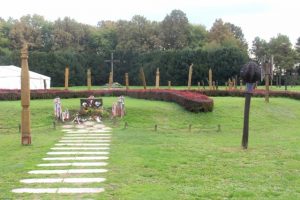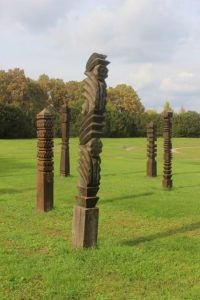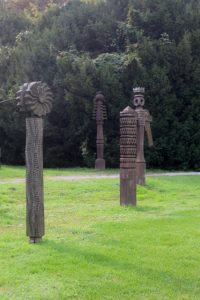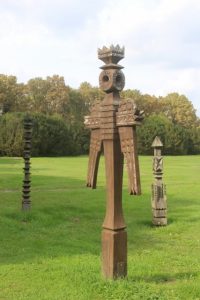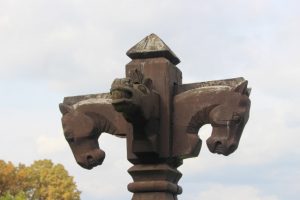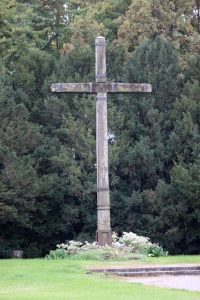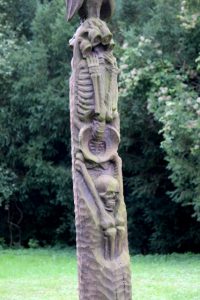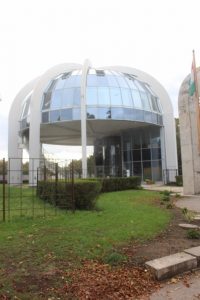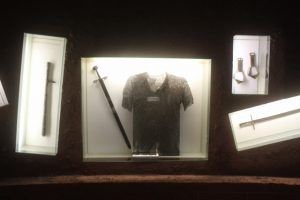The memorial in Mohacs, to the defining battle in 1526, is a rather underwhelming affair.
We not really here for the town of Mohacs, a small and not very exciting affair on the Danube River, close to where the river flows into Croatia. We are here to visit the Mohacs battle field, or rather, the memorial erected on the battle field, where the Ottoman forces thrashed the Hungarian army in 1526. A defeat that led to a traumatic subdivision of Hungary, and 150 years of Ottoman occupation of the southern half of the country – and perhaps also the first instalment of the Transylvanian question, about whether Transylvania belongs to Hungary or Romania.

entrance to the Mohacs memorial: each of the metal pieces represents a person killed near Mohacs, the opening at the apex symbolizes the trauma suffered as a result of the lost battle. Really!
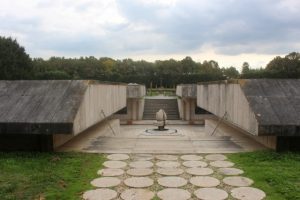
appraoching the memorial field, the sunken buildings “recalling the atmosphere of monastries that persihed under Turkish rule”. Really!
The battle itself was over in a few hours. The Hungarians, led by their 18-year old king, decided not to wait for reinforcements, and were subsequently routed by a superior Ottoman force, which killed perhaps 20,000-25,000 Hungarians, including the King and a large group of nobles. Thus nobody left to rebuilt the defences.
My guidebook – 15 years old – had warned that there was not much to see, except for the memorial, but out of historical interest, I wanted to see it anyhow. Besides, it is really close to Pecs, our next destination. I am glad we didn’t make a massive detour. It seems that, in the past 15 years, the Hungarians have patched up the site somewhat, in order to turn it into a commercial venture. After having paid a for Hungarian standards steep entrance fee, we were led into a kind of an arena, with apparently randomly placed wooden statures, or totems – no explanation as to what they signify, except that some of them are being repaired. Some are rather abstract, others do have some recognizable images carved – not necessarily always uplifting. Altogether incomprehensible, although I later read in a pamphlet that the totems are supposed to represent grave marks to the memory of the killed soldiers. There is a lot more I only realise afterwards, from the wedge of black pines symbolizing the Turkish counter-attack to the concentric paths ‘suggesting that the problem and the conclusions encourage people to circle around them, with no solution of absolution offered’. Right!
Back near the entrance we enter a kind of an UFO-shaped cupola, which houses the museum: an equally underwhelming experience. A film in Hungarian, a couple of rusty knives and swords, and a chainmail. And the next floor of the museum? No, that is all, the next floor is reserved for a restaurant on site. Which is closed, of course.
Next: to nearby Pecs.

